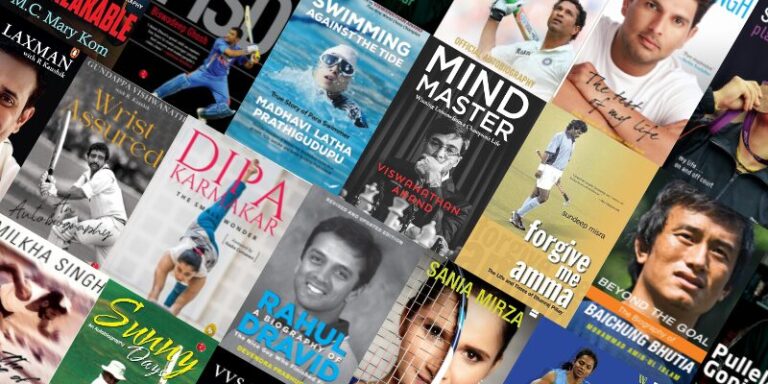In this essay, Sneha Pathak shares her journey of becoming a translator, translating her father’s stories, finding stories to translate, and how her love for languages pushed her to work on her art.
I grew up with the sound of the typewriter, reading my father’s manuscripts on the sly. I read them even when I was not mature enough to understand their meaning. As I grew up and English literature became more and more my world, the frequency of reading those manuscripts dwindled.
Journey of Translating
In 2018, when after a change of job and cities, I was searching for some solace and connection with literature by being more than a reader, I translated my first story. The first draft was done in the span of a few weeks, but I continued to tinker with it till five years later. Unfortunately, it still could not become part of the published anthology.
The fact that my father had a cache of his own stories made it easy for me to decide who/what to translate. There they were, close to a hundred stories, some of them translated into other Indian languages, but none into English.
The last week of 2017 was momentous for me. I quit a job and joined another, changing cities in the span of that one week. I was looking towards a more well-paying, permanent job which was in the same city as my husband’s. What I had not anticipated was how quickly I would come to realise that this job was not for me. It cut me off from teaching and, worse, I felt that it was cutting me off from literature..
But there was another, perhaps deeper, reason for why I decided that I had to translate. Even when I was happily teaching, I always wanted to be a writer. That was my dream job. The only problem? I did not have a story to tell. Fragments, yes. Bits of dialogue, yes. But even the seed of an idea? No. And then, one day, it came to me.
Not the idea for a story, but the idea that if I couldn’t tell a story, I could always retell a story. For what else is translation, if not a retelling?
The Stories and Storytellers
Unlike the first story that I picked up to translate, I don’t remember the order in which I picked up the others. What I did try though was to include ten of his stories that were all taken from different periods of his writing life as that felt the best way to reflect the change in his writing style, themes, as well as his worldview. There were characters, places, and even events I could recognise when I read these stories, and felt that I too had a personal bond with them.
Before I started translating in earnest, I decided to read more translations from Hindi to English along with their originals, wherever possible. This exercise proved beneficial. It gave me an idea of how a translator works with source material. Sometimes, I was lucky to find texts that were translated twice by two different translators.
Looking at the difference in their word choices and tone and comparing it with how I was translating the text in my head (or sometimes a fragment of the text on paper) gave me useful pointers along with building my confidence. I even did an Instagram post comparing two translations of Kamleshwar’s short story “Dilli Mein Ek Maut” (translated both times as A Death in Delhi).
When it came to selecting ten stories, I chose those translating stories that appealed to me the most emotionally. Stories like Mrs. Simon is Waiting and Naveen and Me were difficult to translate because of their emotional impact on me as a reader. On the other hand, a story like Birthday Party felt easier and was perhaps my quickest work because it had more dialogue than descriptions. I must confess at this point that another criterion while selecting the ten stories of the anthology was the ease of translation.
There were stories that I was tempted to include but resisted because I felt that conveying the nuances of the language and the story to the readers would be a translating challenge I was not then equipped for. But even the stories I thought I was equipped for challenged me in multiple ways. First, there were the descriptions, particularly those of nature. As a reader, I always had the liberty to skip over passages that involved descriptions, but reading them as a translator was different. It helped me read descriptive passages with a much greater critical eye (and respect) than before.
Recommended Reads: Translations- The Talk of the Publishing Town
Then, there were the cultural nuances and the vocabulary of the different characters. There are characters in the stories who speak Hindi with different inflexions. A character, I remember, says “Muaaf kijiyega” (मुआफ़ कीजिएगा) instead of the plain and simple “Maaf kijiyega” which bothered me for days because it conveyed so much about the character than the “Excuse me” which I ultimately settled for, even though at one time I toyed with the idea of making up a word like “Hexcuse me”, before deciding that it would perhaps be taking things too far.
I did keep the character’s address to the story narrator as “Bhaijaan” because that captured at least some of the taste of his conversational style. The word “chehka” (चहका) used for describing a character’s way of speaking proved to be another itch because I felt that nothing that I was using in lieu was conveying the sense that I wanted it to. Through these challenges, this process taught me that while translating, the value of finding the right word, the exact word as no novel, no creative-writing manual had ever been able to do.
And then there were the titles. In many cases, I kept the original titles, if they fitted. For example, Mrs Simon is Waiting is a close translation of the Hindi “मिसेज़ साइमन का इंतज़ार.” In many others, I struggled with finding the right titles for days and sorely failed in my mission, settling for whatever best I could.
So translating the Hindi version of the story titled “Naveen and Me” in the anthology was “शाम के कुहासे में एक दोस्त”, and I feel that the Hindi title is much more inviting than what I could come up with. To add insult to injury, after the book had gone to print, I suddenly began worrying if the grammatically correct title would have been “Naveen and I” and if someone would actually point this out in their reviews. (Nobody has done so yet, the lord be praised.)
The Journey Continues
These instances made me realise that translation means taking your readers the closest that you can to the source text. It can never be an exact copy. Metaphorically speaking, if one were to place the translated text above the original, the words would never overlap perfectly because there are multiple layers between them – the understanding of the translator, her biases, the codes of the original language, and the codes of the target language.
As a translator, it is my job to work through all of them, finding the best possible mixture of all these that can be as close to the original, without being an exact copy of it. Translation was a rewarding process, it satisfied me. I hope life will give me chances for more satisfaction.






















